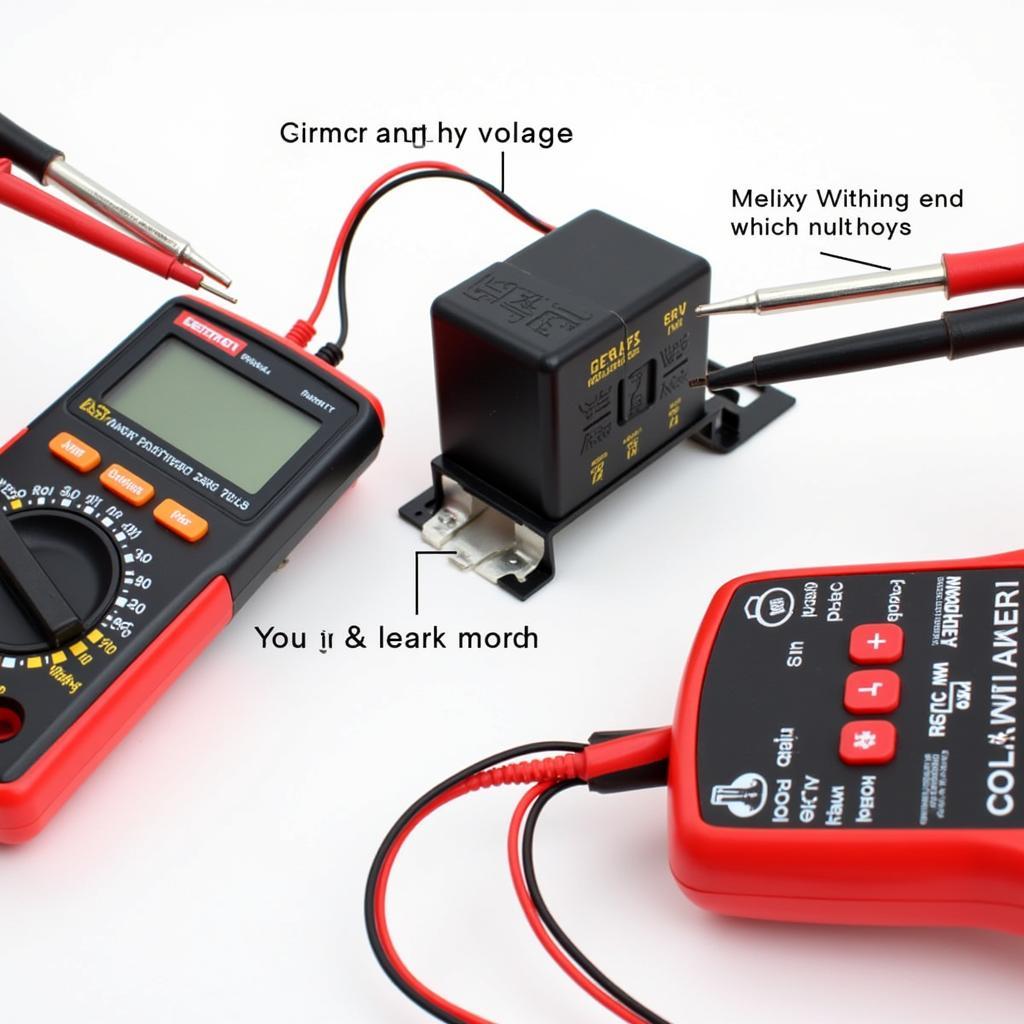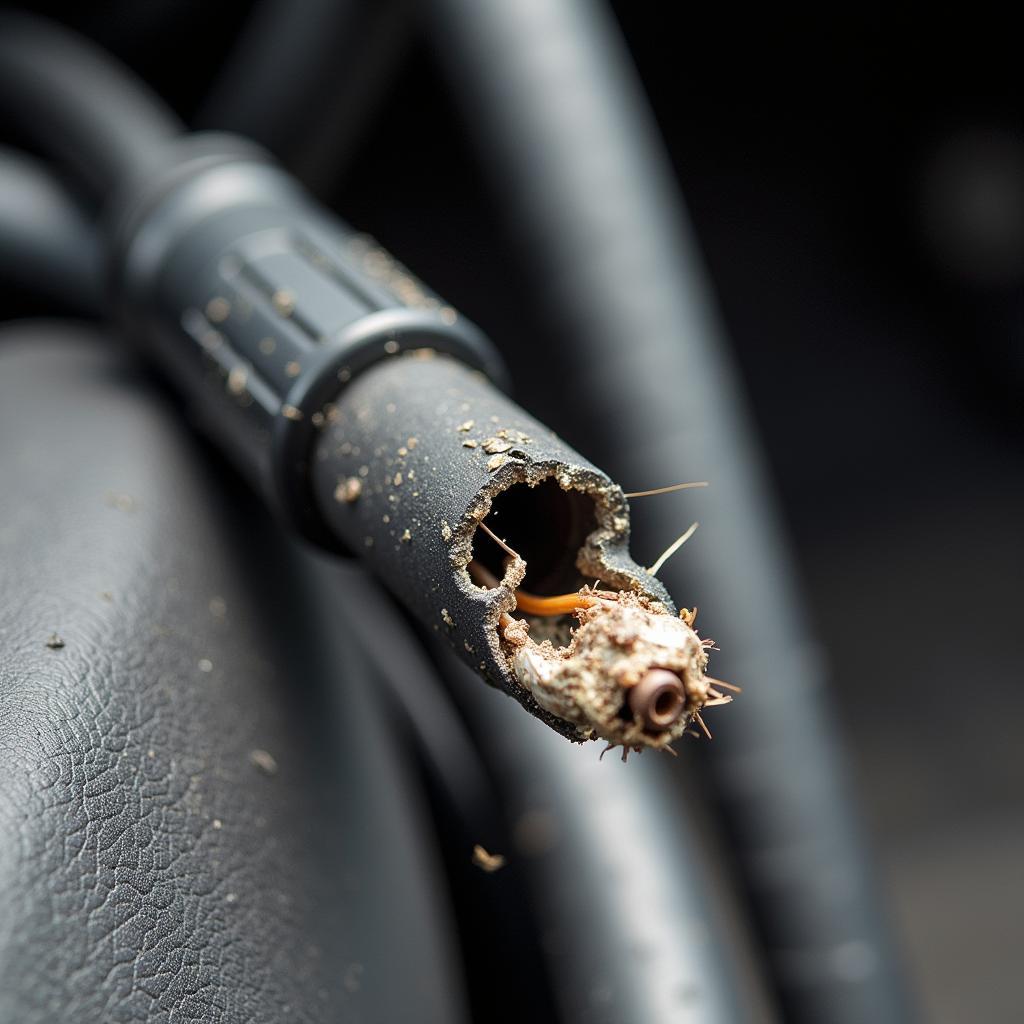Relays are small but mighty components in your car’s electrical system. They act like electrical switches, controlling everything from your headlights and wipers to the engine’s fuel pump. A Relay Problem In Car can lead to a variety of frustrating issues, leaving you stranded or with a malfunctioning system. This comprehensive guide will equip you with the knowledge to diagnose and fix common relay issues, whether you’re a car owner, a mechanic, or an automotive technician.
Similar to ford car problems, relay problems can be frustrating. A failing relay can manifest in various ways, from intermittent issues to complete system failure. Understanding the function and symptoms of a bad relay is crucial to effectively troubleshooting your car’s electrical gremlins. Relays are essentially electromagnetic switches that control high-current circuits using a low-current signal. This protects more sensitive components and wiring from overload. When a relay fails, the circuit it controls is interrupted, causing the corresponding component to malfunction.
Common Symptoms of a Bad Relay
How can I tell if I have a relay problem in car? Several symptoms can point to a failing relay, including:
- Clicking Sounds: A common sign of a bad relay is a clicking sound emanating from the relay box. This indicates the relay is attempting to engage but failing to maintain a connection.
- Intermittent Operation: Does your horn work sometimes but not others? Intermittent operation of electrical components is a classic symptom of a faulty relay.
- Complete Component Failure: A completely dead component, like headlights that won’t turn on, can be caused by a failed relay cutting off power to the circuit.
- Overheating: A faulty relay can overheat, sometimes even melting the relay’s plastic housing. This can be dangerous and should be addressed immediately.
- Burning Smell: A burning smell, often accompanied by smoke, can indicate a severely overheated or short-circuiting relay.
 Identifying Car Relay Location
Identifying Car Relay Location
Diagnosing a Relay Problem in Car
How do you test a car relay? Diagnosing a relay problem in car often involves a few straightforward steps:
- Locate the Relay Box: Consult your car’s owner’s manual to find the location of the relay box. It’s usually under the hood or beneath the dashboard.
- Identify the Suspect Relay: The owner’s manual should also provide a diagram showing which relay controls which component.
- Visual Inspection: Check the relay for signs of damage, such as melting, burning, or corrosion.
- Relay Swap: Swap the suspect relay with a known good relay of the same type. If the problem shifts to the other component, the original relay is likely faulty.
- Multimeter Test: Use a multimeter to test the relay’s continuity and voltage. This can confirm if the relay is functioning correctly.
Just like troubleshooting how to fix an electrical problem on a car, identifying the source of a relay problem can require some investigation. Always disconnect the negative battery terminal before working on any electrical components.
 Testing a Car Relay with a Multimeter
Testing a Car Relay with a Multimeter
Replacing a Faulty Relay
Why is it important to replace a faulty car relay? A faulty relay can lead to various malfunctions, and replacing it is usually a simple and inexpensive fix. Here’s how:
- Disconnect the Battery: Always disconnect the negative battery terminal before working with electrical components.
- Remove the Old Relay: Most relays are simply plugged into the relay box. Gently pull the old relay out.
- Install the New Relay: Plug the new relay into the same slot as the old one. Ensure it’s securely seated.
- Reconnect the Battery: Reconnect the negative battery terminal.
- Test the Component: Test the component that was previously malfunctioning to ensure the new relay has resolved the issue.
Preventing Relay Problems
What are some preventative measures to avoid car relay problems? Regular maintenance can help prevent relay problems. Check your car’s electrical system periodically for any signs of corrosion or damage. Keeping your car’s battery in good condition also helps prevent relay issues.
This is similar to addressing car problems with a hummer where preventative maintenance is key. “Regular checks and cleaning of the relay box can significantly extend the life of your relays and prevent unexpected electrical failures,” advises automotive expert, Robert Miller, ASE Certified Master Technician.
Conclusion
A relay problem in car can be a nuisance, but understanding how relays work and how to diagnose and replace them can save you time and money. This guide provides a comprehensive overview of relay problems and solutions. If you’re still experiencing issues, don’t hesitate to contact us at AutoTipPro for expert assistance. Our number is +1 (641) 206-8880 and our office is located at 500 N St Mary’s St, San Antonio, TX 78205, United States.
 Different Types of Car Relays and Their Functions
Different Types of Car Relays and Their Functions
Similar to understanding club car ds fuel pump problems, addressing relay issues promptly is crucial for ensuring your car operates smoothly and reliably. “Remember, a small relay can have a big impact on your car’s performance,” reminds Sarah Johnson, Electrical Systems Engineer at Automotives Inc.
This guide is similar in its approach to diagnosing and troubleshooting as the guide on alero car 2004 overheating problems. Remember, safety first! Always disconnect the battery before working on any electrical components.







Leave a Reply